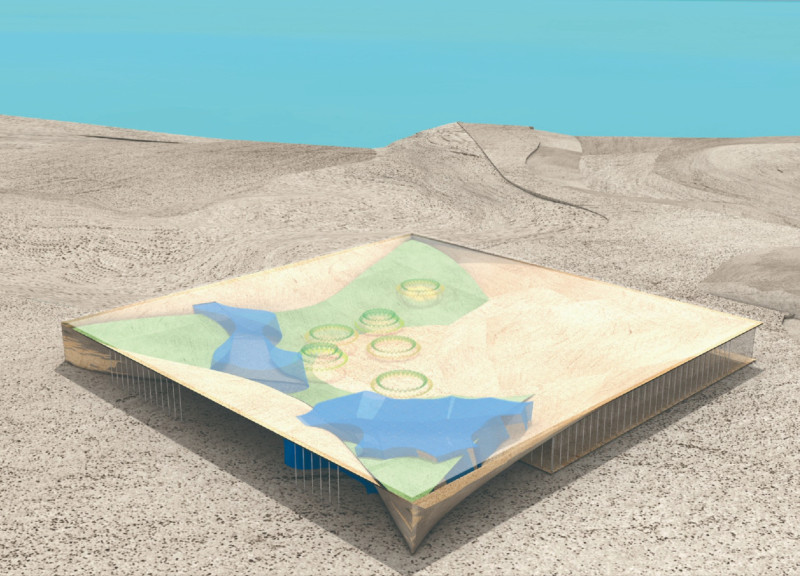5 key facts about this project
The Iceland Greenhouse Restaurant is located near Myvatn Lake and Haverfjall Volcano, offering a unique setting for both agriculture and community interaction. Designed to blend with the natural landscape, it serves as a horticultural facility while providing a welcoming space for visitors. The design approach emphasizes practical use and encourages a connection between people and nature.
Architectural Layout
The layout features a terrain that resembles a valley, allowing for easy movement and engagement among visitors. The greenhouse acts as the central feature, incorporating a vertically expandable system for plant cultivation. This arrangement optimizes space for growing crops. It also reflects the landscape’s natural contours, making it a part of the surrounding environment.
Structural Design
The roof is constructed using a lightweight, light-membrane material that offers good thermal insulation. This choice plays a key role in maintaining a comfortable climate inside the greenhouse, especially during cold weather. The greenhouse's entrance is located on the first floor, linking it to the landscape. Inside, mesh units are used to create vertical layers that help light reach the plants effectively, enhancing their growing conditions.
Sustainability Features
The south-facing slope is designed to assist with temperature control. Locally sourced stones are placed on this slope to absorb heat during the day and release it at night. This helps create a stable environment for plant growth. Additionally, the building collects rainwater from the roof for irrigation, while geothermal heating is used to manage water temperatures, supporting sustainable practices.
Community Interaction
An open terrace provides a space for visitors to relax and connect with one another. This area encourages social interaction and enhances the overall experience. The blue volume adjacent to the terrace draws inspiration from glacial formations, visually linking the building with its natural environment and serving as an engaging entry point for all who visit.






















































